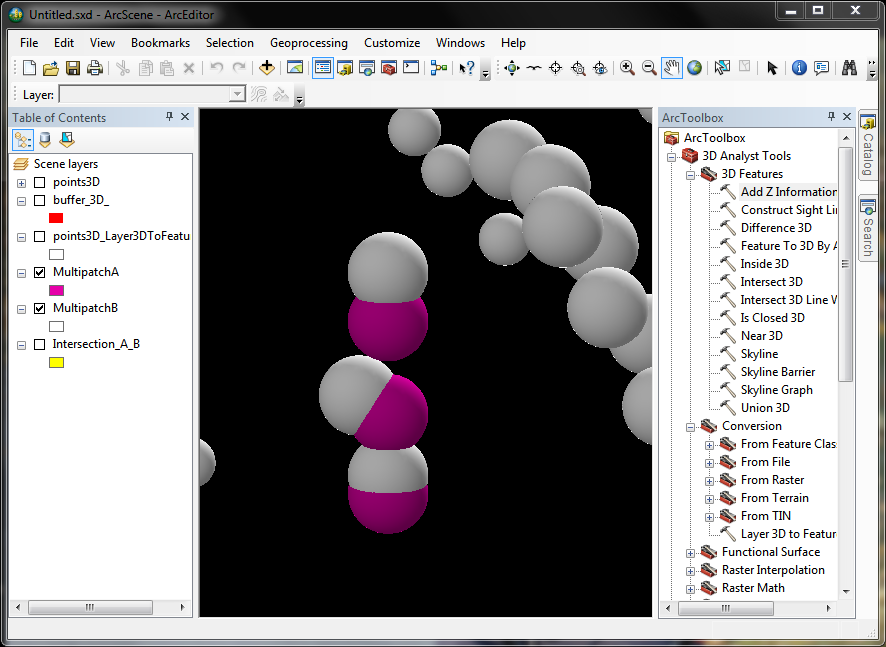I'm on ArcGIS 10. According to all the documentation I've read, 3D Analyst should be able to do what I am trying to get it to do, but I am running into problem after problem and I'm almost ready to give up and find a simpler way to answer the question I'm being asked.
In a nutshell, I have several layers I need to intersect or union in 3D. Some are points (thousands of them, which each represent a 3D volume, either a cube or a sphere, the dimensions of which are attribute values), some are polygons. I'm pretty sure the 3D Union and 3D Intersect tools only work on Multipatch features so I need to convert all of them to Multipatch features first.
The main problem I'm having so far is that the 3D Analyst Union and Intersect tools refuse to operate on Multipatch features that are not "closed", and I can't seem to force ArcGIS to create Multipatches that are closed. I've tried converting my one polygon layer (8 features) to a Multipatch both by extruding it in Arcscene using its height and converting that to multipatch and also using the "Extrude Between" tool, and they both produce some multipatches that are closed and some that aren't. I tried converting my points to spheres, using an example I found on ESRI's site here:
http://www.esri.com/news/arcuser/1010/3danalysis.html
Which tells you to symbolize the points as spheres, using an attribute as the radius, then use the "Layer 3D To Feature Class" tool to make them into multipatches. That also produces multipatches that are not closed and therefore useless. I haven't tackled converting points to 3D cubes yet.
So if anyone knows a way to reliably create closed multipatches from 2D polygon layers and/or center points (with attributes describing the dimensions), let me know. Any alternative software solutions would be great too, I'm not tied to ESRI. Indeed, after mucking about with this for the last few days and realizing that ESRI's own tools create multipatches that can't be used with many 3D Analyst tools, an alternative would be preferable.
ETA: What I'm ultimately after is to calculate the volume of space that is occupied by (for example) cubes with a an attribute value of X where they intersect spheres with a value of Y (of course, I have lots and lots of values of X and Y to run).





 The "polygon" features are closed
The "polygon" features are closed